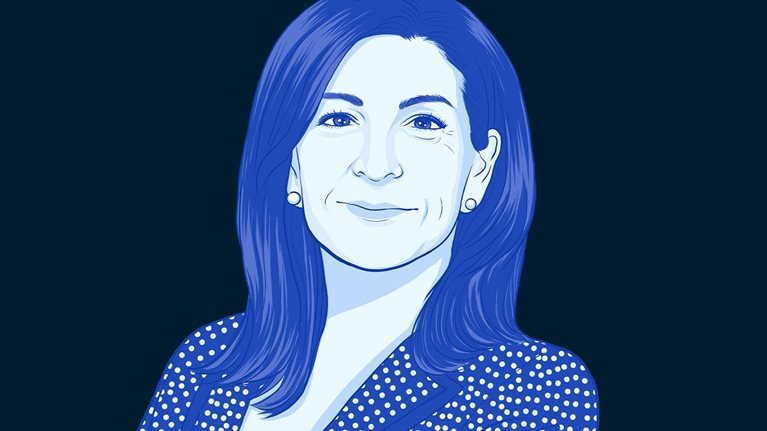Drop is a mobile rewards app that lets members receive targeted offers and earn rewards by shopping with their debit or credit cards. From the time CEO Derrick Fung cofounded Drop with his brother Darren Fung and Cameron Dearsley in 2015, he recognized the enormous potential value in having large volumes of consumer transaction data. In 2020, the company launched Cardify (now called Drop for Business) to responsibly monetize that data.
In a conversation with McKinsey’s Siavash Habibi and Matthias Lange, Derrick Fung discusses the importance of initially walling off the new business, the challenges of securing buy-in from employees, and the importance of having a long-term vision for the new business, including how it fits into the core.
Siavash Habibi: Drop was a fast-growing scale-up when the COVID-19 pandemic struck in early 2020. You started Cardify the same year. Why did you set up Cardify as a separate business?
Derrick Fung: I remember speaking with a board member even before the full COVID-19 shutdown. He counseled me to use the next board meeting to forecast a world in which e-commerce could shut down. In retrospect, of course, we now know it exploded. It is in moments like those—in challenging times—when some of the most creative ideas come about.
Before everything shut down, we had already begun to execute our long-planned data strategy. We established a separate team to create this new business, despite some internal resistance, because it allowed us to think more independently and take more risk and because it is more of a B2B play.
Siavash Habibi: How was Drop performing at that point?
Derrick Fung: E-commerce went crazy in the pandemic. People started doing all their shopping online. We saw that growth in our data and in our core business. Also during that period, our merchants were ramping up their marketing spending, and consumers had a lot more money to spend. This ties in with the concept of loyalty. Drop was doing well and continues to do well.
Siavash Habibi: In an economic downturn, many start-ups and scale-ups focus narrowly on safeguarding the business; Drop started a new business instead. Were you forced to make trade-offs between the new and core businesses?
Derrick Fung: At that time—and even today—we were focused on defining the right efficiency metrics for our core Drop business. We quickly shifted from top-line growth and user acquisition to unit economics. We ensured the lifetime value of the members we were acquiring outweighed the cost of acquisition. We optimized for gross margins over low-margin revenues. And we made sure everything company-wide laddered up to those key metrics—except for Cardify.
Cardify’s goal was to generate top-of-funnel buzz under a different name. We wanted our data to be viewed in as many publications and channels as possible by key decision makers who might ultimately be interested in our data themselves. A strong emphasis on content generation continues to be central to our strategy. Moving fast and taking bigger risks was critical to going to market with that data product.
Matthias Lange: What were some of the challenges in launching and scaling two businesses in parallel?
Derrick Fung: We have an efficiency mindset at Drop. We’re more buttoned up and focused on increasing profits. Having another part of the business that was moving fast created a mindset gap among our employees. It helped that Cardify was walled off, but it was also important that we painted a longer-term picture to show all our people how Cardify fit into Drop. The data asset is a big part of the vision for Drop in the long term. We want to be a high-growth company with an e-commerce marketplace as our core business and margins of 30 percent. As a software company, we can’t achieve those margins without the data assets. Helping everyone understand how the two businesses work together ultimately helped us fix the mindset gap.
Siavash Habibi: How has Drop benefited from Cardify now that it’s more integrated and called Drop for Business?
Derrick Fung: Imagine having a dividend deposited into your Drop points balance every month. The more we use the data, the more that dividend increases. Long term, consumers may share even more data with us—for example, receipt data or location data. From polling, we know our members will give up a good chunk of their data in exchange for our value.
Consumers also receive value from a more personalized experience. Although we technically could do personalization without Cardify, that business accelerated our personalization efforts because we clean and contextualize the data.
Also, we now have offerings for merchants at the top and the bottom of the marketing funnel. In addition to helping build loyalty with consumers, we offer data—in accordance with privacy measures and the approval of members—that they can use for market share analysis, pricing strategy, retention analysis, and more. Access to real-time data that shows shopping behaviors and where a merchant is winning and losing is very meaningful.
Internally, our business model has also benefited substantially. Drop for Business essentially has 90 to 95 percent margins, and we use that high-margin revenue to pump investment back into the core business to continue to scale. Culturally, we also identify much more as a data company now and are embedding that into our DNA. It differentiates us and gives us a more defensible strategy long term.

Shaper interviews
Matthias Lange: In hindsight, what, if anything, would you have done differently when you created Cardify?
Derrick Fung: Move fast and go with your gut and intuition, but also verify with data. In our case, almost overnight, everyone moved to shopping online, so real-time shopping data became a very interesting opportunity, and we had those assets. But it’s also very important to dedicate time initially to getting everyone aligned and helping them see the rationale behind the strategy.
Siavash Habibi: Has this experience changed how you communicate to your Drop team?
Derrick Fung: Totally. When I first started talking about creating a data business internally, I was very casual about it. “Hey, we have this data, and we’re going to start monetizing it.” In retrospect, I should have presented the strategy more formally. Even at a fast-moving scale-up, employees still want clear and pragmatic communications. You also have to be mindful of the audience. A data engineer might get excited about the technical challenges of a new strategy, while your sales team wants to hear about the revenue opportunity. I probably needed too many additional cycles of communication to explain the strategy and get buy-in because I didn’t have this foresight.


